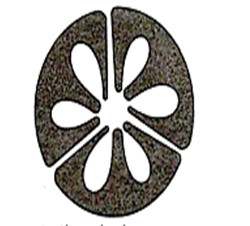 Multiple Choice Questions
Multiple Choice QuestionsA plant produced 50 flowers. Ovary of each flower has 50 ovules. How many fruits and seeds are produced by that plant, respectively?
50, 50
50, 100
50, 2500
2500, 2500
The given symbols of floral parts indicate the condition:
% or CA or PA or G
zygomorphic flower, epipetalous, epiphyllous, superior ovary
actinomorphic flower, epipetalous, interior ovary
zygomorphic flower, epiphyllous, epipetalous, superior ovary
actionmorphic flower, epipetalous, superior ovary
Synadrous condition is common in the family
Umbelliferal
Rosaceae
Malvaceae
Cucurbitaceae
D.
Cucurbitaceae
Synadrous condition represents stamen fused along both their filaments and anthers. It is commonly seen in Cucurbitaceae family of angiosperms.
Identify the type of placentation and its example shown in the diagram below

Axile placentation in lemon
Marginal placentation in pea
Parietal placentation in Brassica
Basal placentation in sunflower
A plant with bulb, trimerous flowers, 6 stamens in two whorls belongs to a specific class in Bentham and Hooker's classification. The number of natural orders present in that class is
3
34
165
202
Study the following combinations.
I. Cymose infloresence - Epipetalous - Solanum
II. Homochlamydeous - Polyandrous - Allium
III. Axile placentation - Radical leaves - Smilax
IV. Zygomorphic - Deadelphous - Butea
The correct combination is
I, II
II, IV
I, IV
III, IV
Ratio between number of stamens in nine male flowers and number of carpels in three female flowers in Euphorbia is
1 : 1
1 : 3
2 : 1
2 : 3
All given statements regarding cymose inflorescence are correct except
main axis terminate in a flower
development of flowers is basipetal
opening of flowers is centrifugal
unlimited growth of axis
The leaves of some plants contain crystals of calcium carbonate in epidermal cells, giving appearance that of bunch of grapes are called
cystoliths
sphaeraphides
raphides
otoliths
Which of the following feature cannot be considered to distinguish underground stem from a root?
Presence of nodes and internodes
Presence of axillary and terminal buds
Absence of scale leaves and adventitious roots arising from nodes
Presence of exogenous branches
